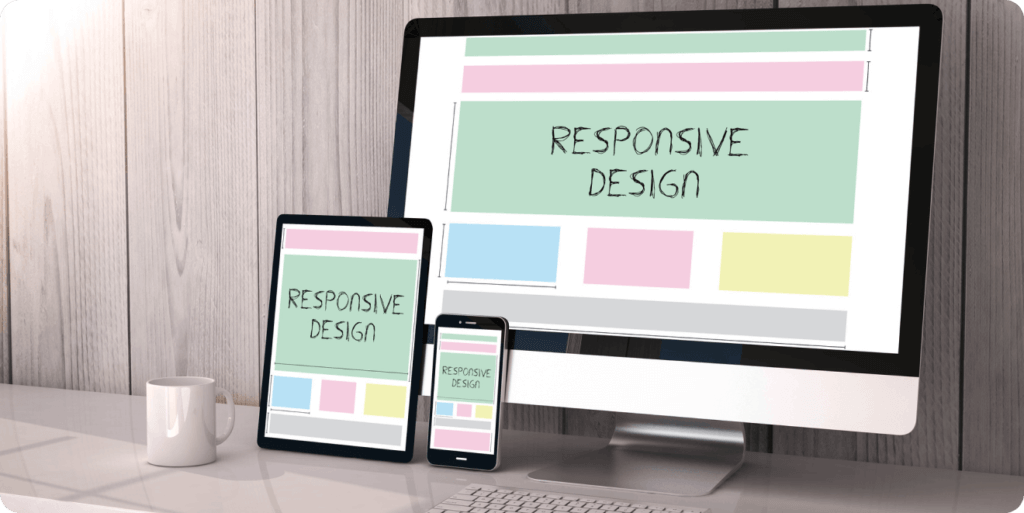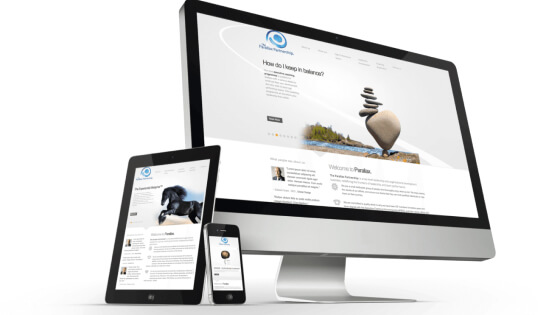Many small businesses neglect their website, thinking of it as a one-time task. But what they fail to understand is that a website is often the first point of contact between your business and potential customers.
So what happens if your website is poorly designed?
The statistic shows that within 1/20th of a second after landing on a website, users form an impression of it. This lighting-fast judgment is entirely based on the design and feel of the website. Strengthening the fact that “In the online world, the first impression is everything.”
If your website looks good, you look professional, and in turn, this gives customers a sense of trust and dependability. But on the flip side, a bad web design does just the opposite by creating a feeling of doubt and hesitancy.
In this blog post, the professional web design company in Houston, TX, will provide an overview on:
What a bad website design looks like. How does it impact your business? Essentials of good website design
What Does a Bad Website Design Look Like?

Houston web design has crafted a few elements of a poorly designed website that will make your customers abandon it:
Clutter: Websites overloaded with irrelevant content, overwhelming visuals, and a confusing navigation structure make it difficult for customers to find what they want.
Visually Dull: An ugly-looking website with poor color combinations, distorted images, and a lack of interactive elements can easily turn customers away.
Non-Responsive: With more and more people using mobile devices to surf the web, having an unresponsive website design can be a huge turn-off.
Poor Website Content: Poorly written content filled with grammatical, punctuation, and spelling errors. And most importantly missing CTA(Call To Action) buttons that can engage customers and convert them into leads.
Poor Photo Quality: Low-resolution images and videos are a dead giveaway of an amateur website.
Heavy on Eyes: Colors and fonts that are too bright and difficult to read can make customers want to stay away.
Slow Loading Speed: A slow-loading website results in a high bounce rate and poor user experience.
How Does Poor Design Impact Your Business?

A poorly designed website affects your business, but the impact on your bottom line is hard to quantify. However, we have tried to briefly explain how a bad website design can prove to be a costly mistake for your business.
Hurts your Credibility
You may be the best in your business, but what’s the point if your website fails to reflect that? Poor design can be a huge red flag for customers, making them think twice before trusting or buying from you.
Reduces Brand Loyalty
When a customer lands on your page but turns away in frustration– because of the design, navigation, broken links or other elements– they may not return. A bad user experience can impede brand recognition and reduce loyalty among existing customers.
Makes you Look Outdated
Gone are the days of static websites that just had basic information about a business. Keeping your website design current and up-to-date is essential to making customers feel you are in touch with the advancement in the industry. The outdated design will make you look behind the times, and your customers may think that you are not serious about providing them with innovative solutions.
Puts You Out of Competition
A good website design distinguishes you from your competitors. If customers have difficulty navigating through your site and finding what they need, they can easily turn to your rivals for better design. This will affect the conversion rate as potential customers may prefer to buy from your competitor, offering the same product or services with an appropriate web presence.
Business May Go Unnoticed
Your hired SEO services in Houston may have put a lot of effort into building your SEO strategy. But if your website isn’t attractive and user-friendly, all those efforts will fail. Why? This is because your bounce rate is likely higher, meaning fewer customers will stay on your page. As a result, search engines like Google may not regard your website as relevant and thus not show it in their search results. Making your business go unnoticed.
Loss in Revenue
The primary purpose of a website is to convert customers into buyers and generate revenue from them. You obviously want your customers to find you, navigate around, and make a purchase. But you are missing out on potential sales if you do not see your customers converting into leads. Poor design can cost you crucial conversions and ultimately reduce your profits.
Essentials of Good Website Design

Several elements can enhance your company’s website design and benefit your business in terms of increased customer engagement and website traffic. It is thus important to stay updated with the most recent trends in website design.
Here are some ways you can make your website appealing, user-friendly, and effective:
Designing For Conversion

A web design that encourages users to take action and move along the customer journey is essential for a successful website. Whether filling out a form, subscribing to a newsletter, or taking advantage of promotional offers, your website should make it easy for customers to take action and complete their purchases.
Some Key ways you can optimize your website for conversion while still keeping it visually appealing:
Effective Landing Page
A landing page is the first web page customers see when they visit your site. It should be designed and constructed to capture customers’ attention quickly and encourage them to explore your website further. This can include an attractive design, clear CTA (Call-to-Action) buttons, vivid images of products or services, and value-driven copy that illustrates how customers can benefit from your offerings.
Use Directional Cues
There are many subtle ways to direct user attention. It is a good practice to choose colors and add design elements that naturally draw the eye to important sections on your page. Using arrows, icons, color contrast, font size variations, or other visual clues can help guide customers to the areas of your website that you want them to focus on.
Vital Info Above the Fold
Your website should display all relevant information ‘above the fold.’ This means that customers should not have to scroll down or click links to find out what your business is about, the type of services or products you offer and how they can contact you. Be sure to include all essential information in a prominent and visible place.
Designing For User Experience
Similar to conversion-driven design, user experience is an important element of website design. Therefore, your web pages should be organized to encourage users to stay longer and browse through your offerings.
Some key elements to consider for better user experience:
Navigation
The navigation menu should be easy to access and understand. It should also allow visitors to move around your website quickly and easily. The navigation bar should include useful links or drop-down menus that take customers directly to the page they want.
Speed
Your web pages must load quickly, as users are likely to leave a website if it takes more than a few seconds to load. Check your website’s performance and optimize it for faster loading times.
Readability
Use text that is large enough to read without straining the eyes. Using fonts, colors, and backgrounds that are easy on the eyes is important for keeping customers engaged and increasing readability. (tips: Black font on a white background is most popular for readability)
Clean and Clutter-free Design
Minimalistic designs with a clean and organized look are more attractive and easier to navigate. Look for enough white space between elements to make them stand out. Avoid cramming too much information into a single page, and ensure links and CTA buttons are well-spaced.
Designing For Responsiveness

The key elements for creating a responsive website design are.
Flexible Grid Layouts: Using CSS or JavaScript-based columns and rows for organizing content and making it easy to view on multiple devices.
Fluid images: Using flexible image sizes that can adjust according to the screen size of the device being used.
Media Queries: It allows web designers to deliver different stylesheets based on the device or browser being used by customers. This helps create a customized experience for each user that visits the site.
Keep Your Website Up-to-Date with Professional Help
Your website is more than just a digital brochure to promote your business. It is a platform that allows you to engage and interact with your customers and grow your business.
So how do you ensure your website is always up-to-date and running smoothly?
With professional help and for that, YellowFin Digital is here to help.
We are a web design and development agency in Houston specializing in creating compelling online experiences for businesses of all sizes.
Our team of skilled web developers is proficient in creating websites that are easy to navigate, highly functional, and represent your brand in the best way possible. With our help, you can create an optimized user experience that drives conversions and generates more leads for your business.



